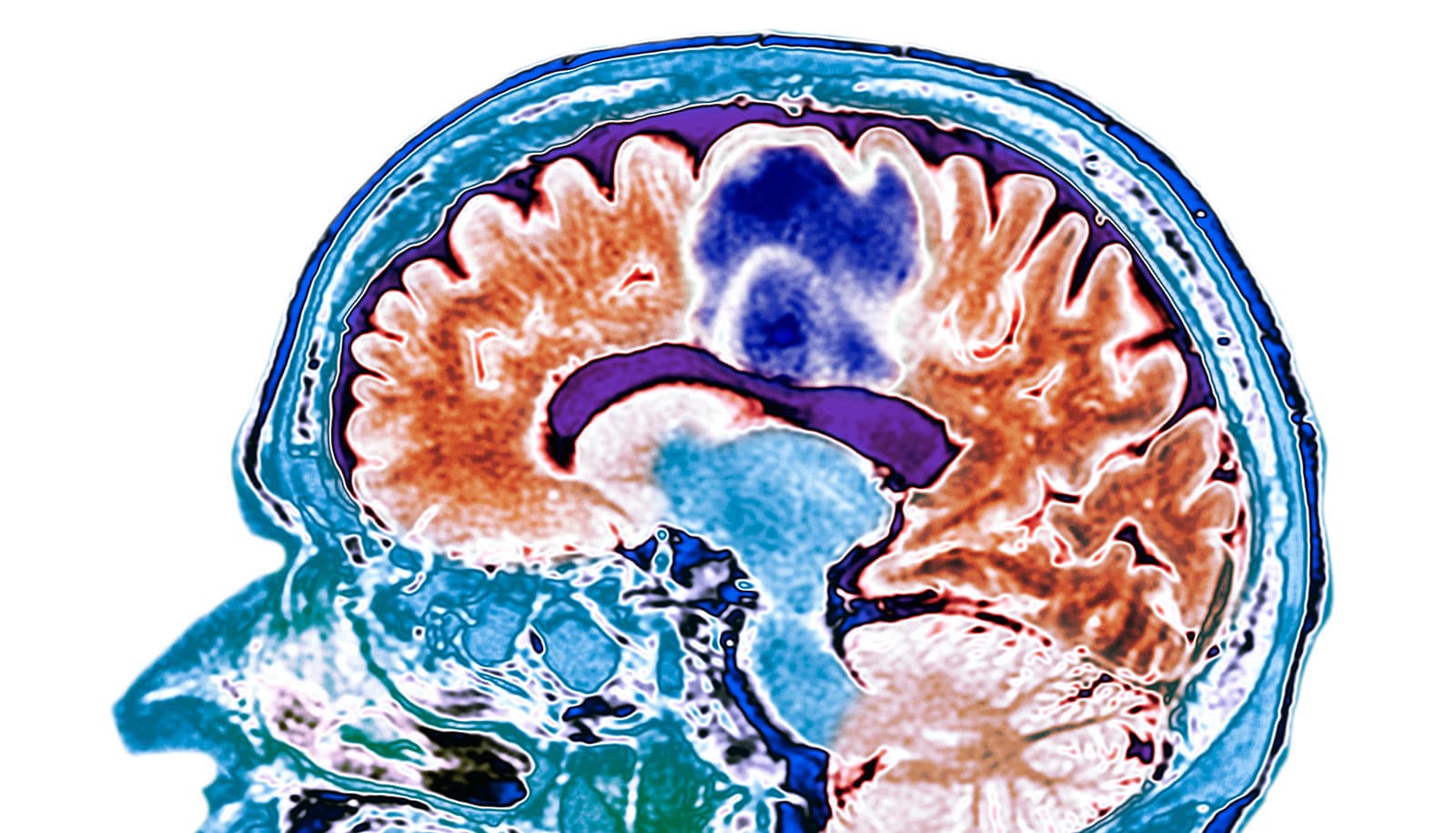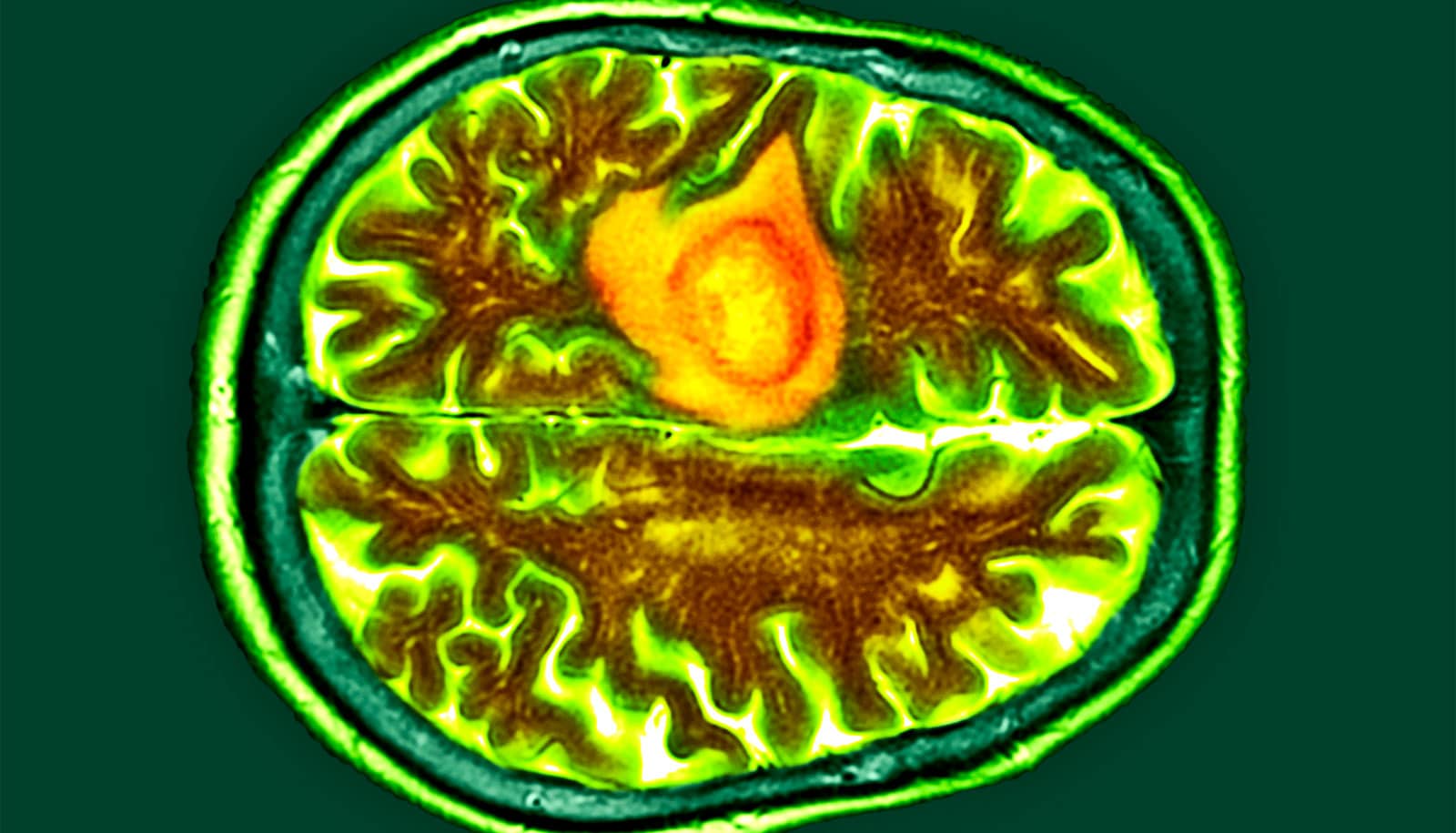Researchers have demonstrated in mice a new approach for delivering medication across the blood-brain barrier to treat tumors that cause aggressive, lethal brain cancer.
In their new study, the researchers show how a modified peptide, in mice, helps a cancer drug pass through the blood-brain barrier, which is known to be extremely difficult to penetrate and thus serves as a massive hindrance to treating brain tumors.
“We were not only able to get a drug into the brain, but to deliver it at a concentration that should be able to kill tumor cells,” says coauthor Sean Lawler, associate professor of pathology and laboratory medicine at Brown University, whose lab investigates therapeutic approaches for the treatment of brain cancer.
Brain malignancies are some of the most lethal forms of cancer, as well as the hardest to treat. Glioblastoma is the most common malignant brain cancer—it’s highly aggressive, and most patients live for only around 15 months after diagnosis. Despite the poor prognosis, Lawler says, there has been frustratingly little progress in treating glioblastoma and improving the chances of survival over the past 20 years.
“We think this is a significant finding that could ultimately inform new approaches to treating people who face some of the most severe brain cancer diagnoses,” Lawler says.
Blood-brain barrier works almost too well
One of the challenges in treating brain cancer, Lawler says, is getting therapeutic substances through the blood-brain barrier, a network of blood vessels and tissue made up of closely spaced cells that protects the brain from harmful substances.
When it comes to anti-cancer drugs, the blood-brain barrier does its job almost too well: the cancer-fighting drugs can’t penetrate the barrier in sufficient amounts to have a therapeutic effect on tumors. Even drugs that have been shown to be effective against other types of cancers haven’t shown much of an effect on brain cancer—likely because the blood-brain barrier gets in the way.
“The question became, ‘How do we get more of the drug into the brain tumor so that we can improve treatment outcomes?'” says Lawler, who co-leads the Central Nervous System Cancer Translational Disease Research Group at the Warren Alpert Medical School’s Legorreta Cancer Center.
The researchers focused on a type of peptide, or chain of amino acids linked by chemical bonds, that has an intrinsic ability to cross membranes and penetrate tissues. To modify the peptide, the researchers created a staple between amino acids in the sequence, which helped to fortify and stabilize the peptide, and incorporated fluorine molecules. The team had previously shown that this design could improve the peptide’s penetration across the blood-brain barrier.
“We had this enhanced peptide that was not only better at getting through the blood-brain barrier, but could also last longer in the body,” Lawler says. “And then we were able to hook it up to a cancer drug and test it in mouse models of glioblastoma. That was our major step forward.”
The researchers saw an opportunity, says coauthor Jorge L. Jimenez Macias, a postdoctoral fellow in Lawler’s lab.
“This new technology allowed us to test drugs against brain cancer that previously hadn’t been used against glioblastoma because they hadn’t been able to cross the blood-brain barrier.”
Delivering cancer drugs to the brain
The researchers put together a pre-clinical trial—essentially a clinical trial in mice subjects instead of humans. They used a control of the drug with the peptide and tested it against the drug with the enhanced, macrocyclic barrier-penetrating peptide (referred to as M13) in mice with brain tumors.
They conducted subsequent experiments to assess the concentration of drugs needed to kill the tumor cells, as well as to understand how to deliver the drug at a safe level, in a way that would not harm the mouse patients. When those variables were tested, the researchers conducted a treatment study.
The study results showed that cell death due to the enhanced, macrocyclic cell-penetrating peptide M13 was observed mainly in tumor cells, and not in healthy regions of the brain.
This is the first time that researchers have demonstrated how to use this modified peptide delivery system to get cancer drugs into the brain in the context of disease, Jimenez Macias says.
“We have shown for the first time that the linking of an anti-cancer drug to a macrocyclic cell-penetrating peptide leads to effective dosing in mice at many times higher than the drug alone, which can significantly extend survival,” Jimenez Macias says.
The survival rate of the mice treated with the enhanced peptide increased by 50%, the findings show. Lawler expressed optimism for future studies.
“This is only the first attempt,” Lawler says. “We think that with some further optimization and tweaking of the drug and the delivery system, we should be able to improve the treatment, and the survival rate, quite significantly.”
The study is published in the Journal of Controlled Release.
Additional coauthors are from Massachusetts Institute of Technology; Brigham and Women’s Hospital; Harvard Medical School; the Université Libre de Bruxelles in Brussels, Belgium; the National Cheng Kung University in Taiwan University; and Brown.
The National Cancer Institute, the National Science Foundation, and the National Institutes of Health supported the work.
Source: Brown University



